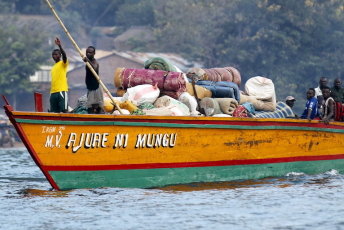On 14 September 2020, South Africa’s Hawks swooped down on a drug trafficking network operating from a luxury estate in Ballito, KwaZulu-Natal. Inside one of the houses in the estate, officers from the Directorate for Priority Crime Investigation – the Hawks’ official name – found an estimated 3.9 tons of methaqualone powder (more commonly known as Mandrax in South Africa), 170 800 heroin capsules and 7.5 kg of heroin powder.
Of greater interest was the discovery of one ton of anthranilic acid – the main precursor in the manufacture of Mandrax. There is a high likelihood that methaqualone was being synthesised from chemical starting materials, presenting a concerning development.
Methaqualone is a synthetic drug that acts as a central nervous system depressant, similar to barbiturates. First synthesised in 1951, methaqualone was then used medically in the treatment of sleep and insomnia issues and as a muscle relaxant or a general sedative. Patients with high blood pressure and anxiety attacks were also treated with the drug.
In the 1960s and ’70s, the drug was commonly marketed as Quaalude and Mandrax and quickly gained notoriety as a recreational drug. The drug was eventually placed under Schedule 2 of the 1971 Convention on Psychotropic Substances due to abuse, addiction and the high potential for dependence among users. Methaqualone is now predominantly produced in clandestine labs due to its illegality.
One of the primary precursors essential for this process is anthranilic acid, which is also a key ingredient in the manufacturing of dyes, perfumes and colourants, among others. When clandestinely produced, methaqualone has a brown, grey or black tacky powder of between 30% to 70% purity. Drug dealers also use the powder as a cutting agent for heroin. Cutting agents are chemicals or other substances used to increase the bulk, dilute, complement or enhance the effects of the illicit drugs.
In South Africa, methaqualone was introduced into the pharmaceutical market under the trade name Mandrax. By the time the drug was listed on the 1971 Convention, it had already gained a market in South Africa, which criminal networks capitalised on. The 2018/19 South African Police Service annual crime report recorded various major seizures and dismantling of clandestine labs in Gauteng, KwaZulu-Natal and the Western Cape.
In South Africa, Mandrax is usually sold in small colourful tablets with a logo imprinted on them under various street names such as ‘buttons’, ‘MX’, ‘lizards’ and ‘flowers’, among others. While Mandrax was originally meant to be taken orally, users tend to smoke or inject the drug for a faster onset of effect.
So what makes the drug so popular in South Africa? For users, the drug contains similar effects to those of other central nervous system depressants, including calmness, and the relief of stress, anxiety and tension.
A former user disclosed to ENACT, ‘Mandrax is taken to calm down and often referred to as ‘downers’. It is not like your “uppers” drugs such as crystal meth or ecstasy (MDMA) which makes one euphoric and energised.’ Furthermore, depending on the dose, the effect of the drug can last for up to five or more hours when taken orally and one to two hours when smoked.
It is extremely addictive and can become dangerous when mixed with other substances. Side effects include dry mouth, headaches, dizziness, chills and diarrhoea. There have been instances where overdose of the drug has resulted in delirium, convulsions and even death.
Often these networks find it difficult to break into or control the heroin or meth market and therefore venture into the Mandrax space. Since the ultimate objective of organised criminals is to make a profit, Mandrax presents an ideal opportunity to do so, although not on the scale of heroin or crystal meth.
For instance in KwaZulu-Natal, the reach of the drug has expanded from the city of Durban to surrounding areas. Reported seizures have occurred in Phoenix, Umhlanga, Sydenham, Chatsworth, Newcastle and Port Shepstone indicating the vast reach of the drug. However, lack of data on drug usage makes it difficult to estimate the size of the Mandrax market and its users. Yet, as long as South Africa has a sizeable consumer market for Mandrax, it will remain a key target for illicit drug criminal networks.
One approach to combat the proliferation of Mandrax in South Africa is to disrupt and dismantle the criminal networks involved in this market. While dismantling clandestine labs and seizing the drugs is to be commended, law enforcement also needs to target key individuals in the criminal chain such as the manufacturers and suppliers of the drugs and their precursors.
In its response to the challenge, the state needs to balance the need between stemming the criminal market and the criminalisation of people who use Mandrax for health purposes. One way is to provide a more regulated market with standard supply which will effectively contribute to controlling the flow of illegal trafficking of the drug. In so doing, caution needs to be exercised in not criminalising patients who use the drug for treatment.
Strengthening drug detection at key points of entry such as harbours and airports is another aspect which is essential in curbing the illicit drug market. Furthermore, training customs and law enforcement officers at these points in the detection of precursors of not only methaqualone but other synthetic drugs becomes critical.
While the Mandrax market is not as profitable as the heroin, methamphetamine or cocaine trade, it nonetheless provides a lucrative opportunity for organised criminal networks to make a profit. In the process, it has a devastating impact on the health, social and economic aspects of society. Unless this problem is addressed and curbed, the white pipe may continue to burn.
Richard Chelin, Researcher, ENACT







